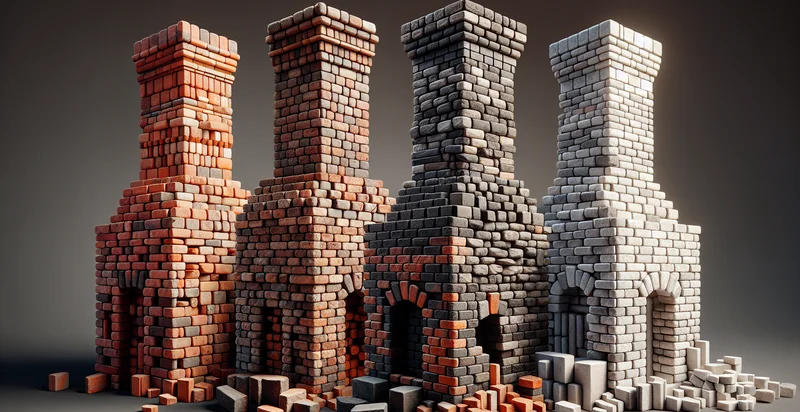Identify what material a chimney is made from
using AI
Below is a free classifier to identify what material a chimney is made from. Just upload your image, and our AI will predict what material a chimney is made from - in just seconds.

Contact us for API access
Or, use Nyckel to build highly-accurate custom classifiers in just minutes. No PhD required.
Get started
import nyckel
credentials = nyckel.Credentials("YOUR_CLIENT_ID", "YOUR_CLIENT_SECRET")
nyckel.invoke("what-material-a-chimney-is-made-from", "your_image_url", credentials)
fetch('https://www.nyckel.com/v1/functions/what-material-a-chimney-is-made-from/invoke', {
method: 'POST',
headers: {
'Authorization': 'Bearer ' + 'YOUR_BEARER_TOKEN',
'Content-Type': 'application/json',
},
body: JSON.stringify(
{"data": "your_image_url"}
)
})
.then(response => response.json())
.then(data => console.log(data));
curl -X POST \
-H "Content-Type: application/json" \
-H "Authorization: Bearer YOUR_BEARER_TOKEN" \
-d '{"data": "your_image_url"}' \
https://www.nyckel.com/v1/functions/what-material-a-chimney-is-made-from/invoke
How this classifier works
To start, upload your image. Our AI tool will then predict what material a chimney is made from.
This pretrained image model uses a Nyckel-created dataset and has 15 labels, including Aluminum, Brick, Ceramic, Clay, Concrete, Copper, Fiberglass, Glass, Limestone and Metal.
We'll also show a confidence score (the higher the number, the more confident the AI model is around what material a chimney is made from).
Whether you're just curious or building what material a chimney is made from detection into your application, we hope our classifier proves helpful.
Related Classifiers
Need to identify what material a chimney is made from at scale?
Get API or Zapier access to this classifier for free. It's perfect for:
- Home Inspection Automation: This function can be integrated into home inspection software to automatically identify the material of chimneys during property assessments. By providing accurate classification, inspectors can offer clients a detailed report on the chimney material, helping them assess age, wear, and potential maintenance needs.
- Insurance Underwriting: Insurance companies can use this function to classify chimney materials in evaluating risk factors of properties. Understanding the material can help underwriters determine appropriate premiums and coverage options for fire hazards or structural stability.
- Real Estate Appraisal: Real estate appraisers can utilize this function to analyze the chimney material of properties they are valuing. This information can impact the overall value assessment, as different materials may signify different levels of durability and aesthetic appeal.
- Renovation Planning: Contractors and architects can leverage this function for renovation projects involving chimneys. By identifying the material, they can make informed decisions regarding compatible replacement materials and methods, ensuring structural integrity in design choices.
- Building Regulations Compliance: Local governments and regulatory agencies can use this function to verify that chimney materials comply with building codes and safety regulations. Automated classification can expedite the review process and ensure adherence to safety standards in construction.
- Customer Support for Homeowners: Home improvement retailers can implement this function in customer support tools. By accurately identifying chimney materials, agents can provide tailored recommendations for products and maintenance solutions suitable for specific chimney types.
- Energy Efficiency Analysis: Energy auditors can employ this function to assess how different chimney materials impact heat retention and energy efficiency in homes. This insight can guide homeowners in making improvements that enhance energy conservation by suggesting appropriate insulation and chimney enhancements.


